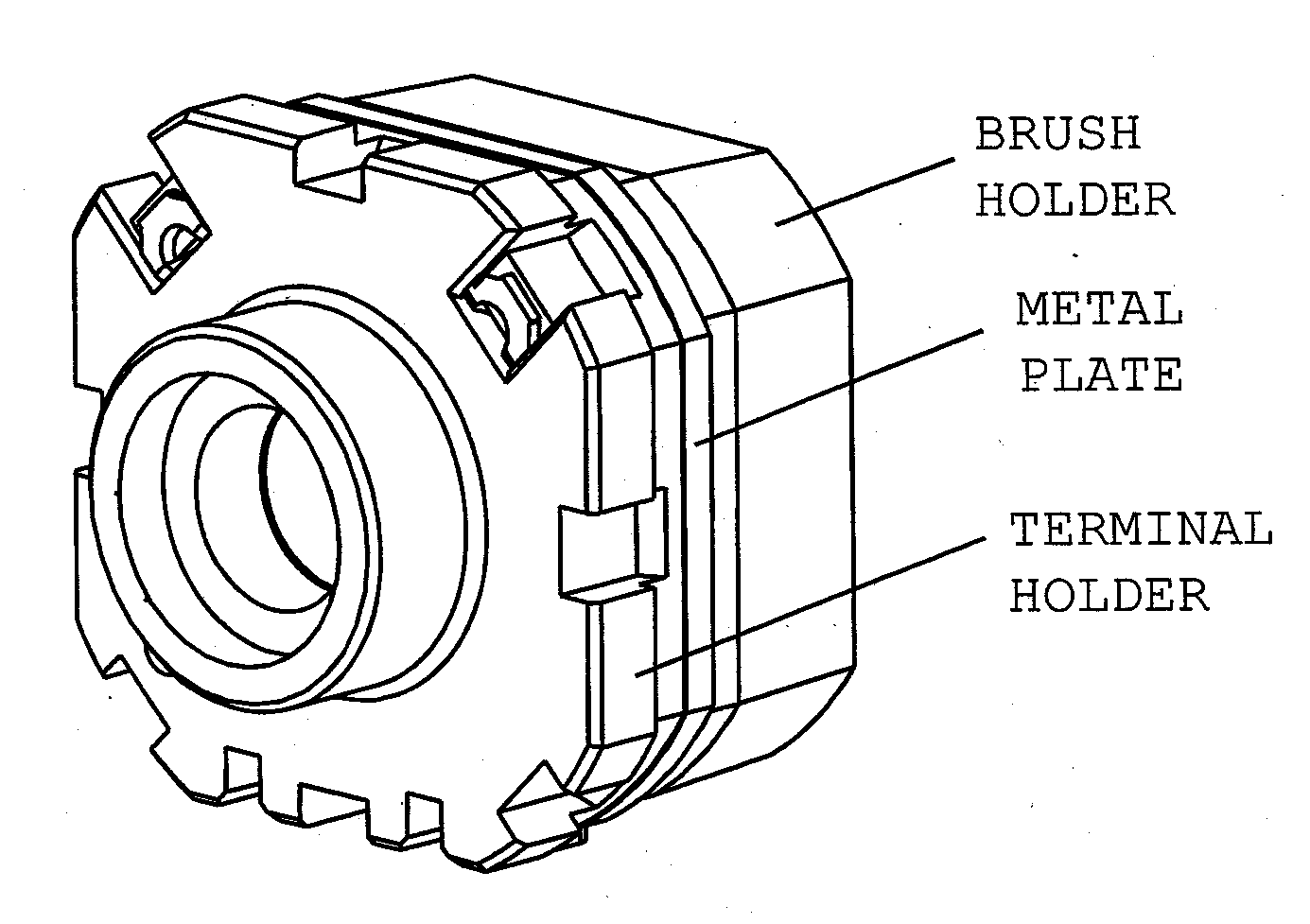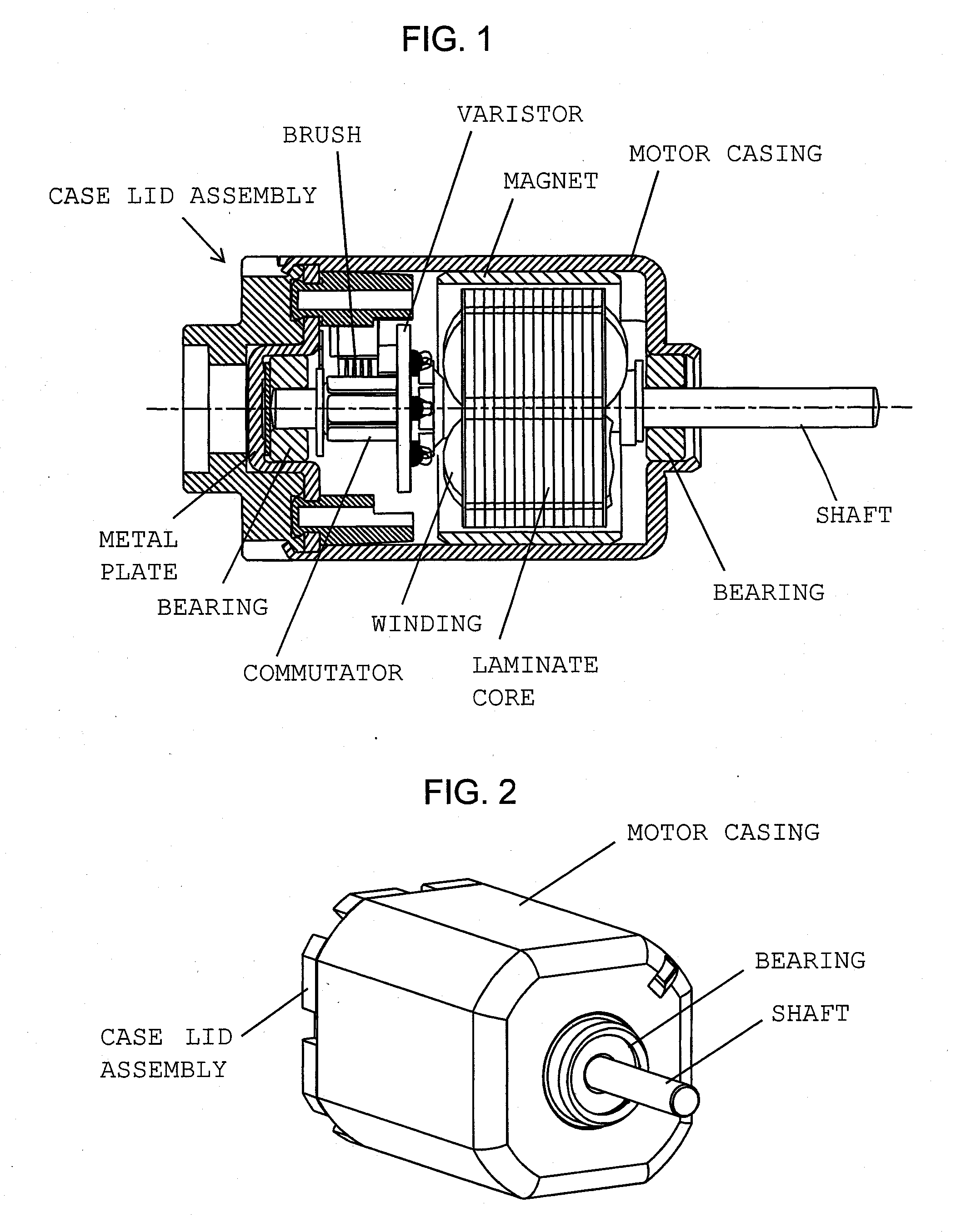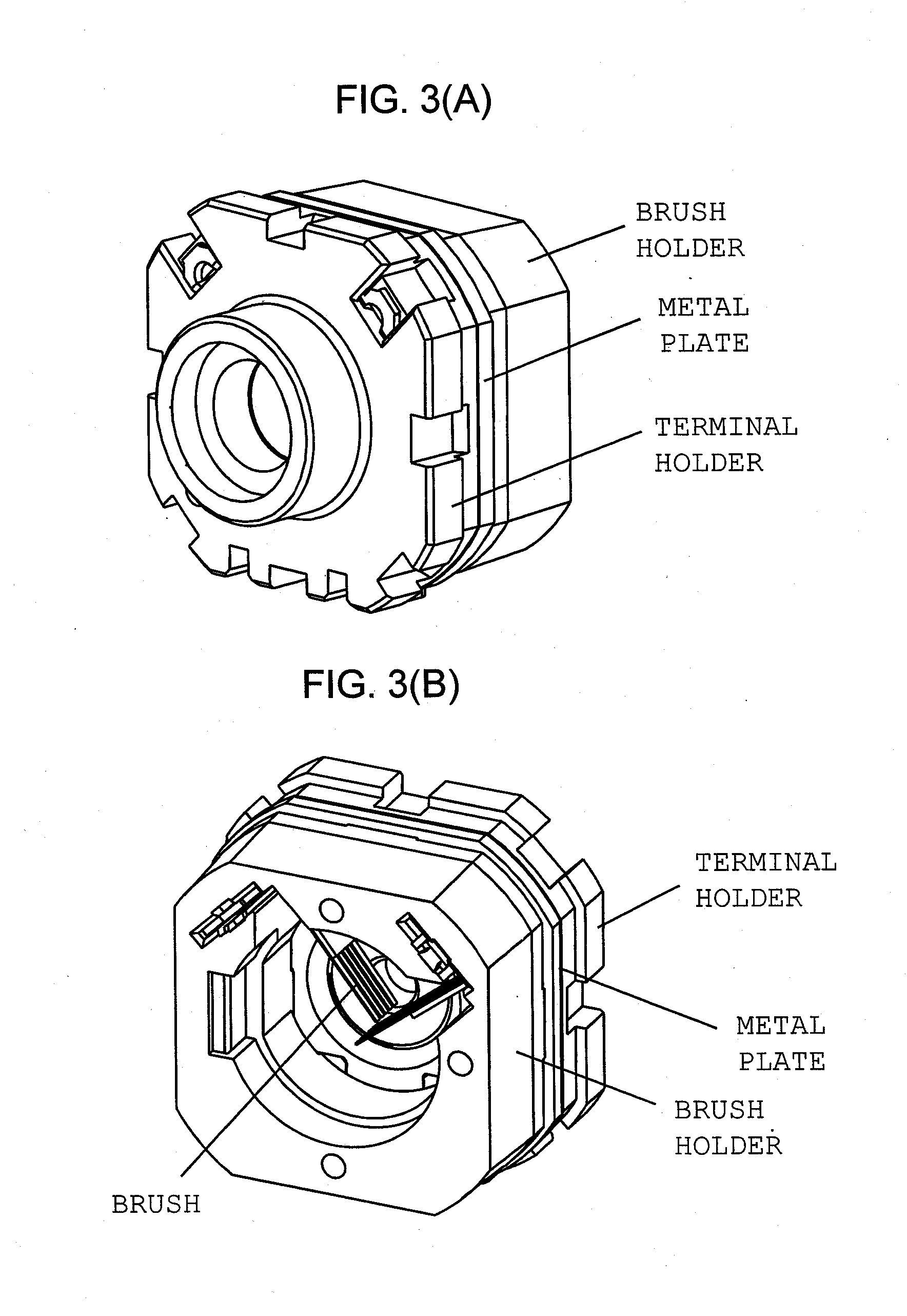Case lid assembly of DC motor with brush
a dc motor and brush technology, applied in the direction of current collectors, dynamo-electric machines, structural associations, etc., can solve the problems of motor not being able to rotate, the shape of the case lid becoming complex, and the possibility of bearing misalignment, so as to prevent entry of foreign objects, prevent the entry of grease, and improve the internal resistance of the ptc element.
- Summary
- Abstract
- Description
- Claims
- Application Information
AI Technical Summary
Benefits of technology
Problems solved by technology
Method used
Image
Examples
Embodiment Construction
[0023]The present invention will now be described by way of example. FIG. 1 is a longitudinal cross-sectional view of a miniature motor including a case lid assembly configured in accordance with the present invention. FIG. 2 is a perspective view showing the outside view of the miniature motor. FIGS. 1 and 2 exemplify a motor which has a quadrangle outer shape and which has a 4-pole magnetic field and six rotor poles. However, the present invention can be applied to a miniature motor which has any shape, any number of field poles, and any number of rotor poles, so long as the miniature motor is a DC motor with brushes. As illustrated, a magnet which forms field poles is attached to the inner circumferential surface of a motor casing, which is formed from a metallic material into a closed-bottomed tubular shape. A case lid assembly, which is the feature of the present invention and which will be described in detail later, is fitted into an opening portion of the motor casing.
[0024]A...
PUM
 Login to View More
Login to View More Abstract
Description
Claims
Application Information
 Login to View More
Login to View More - R&D
- Intellectual Property
- Life Sciences
- Materials
- Tech Scout
- Unparalleled Data Quality
- Higher Quality Content
- 60% Fewer Hallucinations
Browse by: Latest US Patents, China's latest patents, Technical Efficacy Thesaurus, Application Domain, Technology Topic, Popular Technical Reports.
© 2025 PatSnap. All rights reserved.Legal|Privacy policy|Modern Slavery Act Transparency Statement|Sitemap|About US| Contact US: help@patsnap.com



